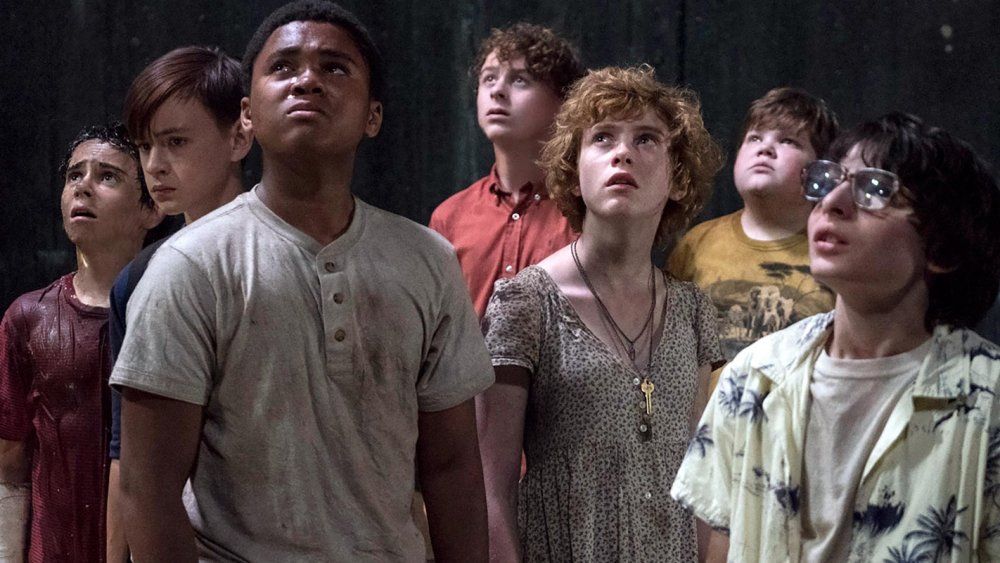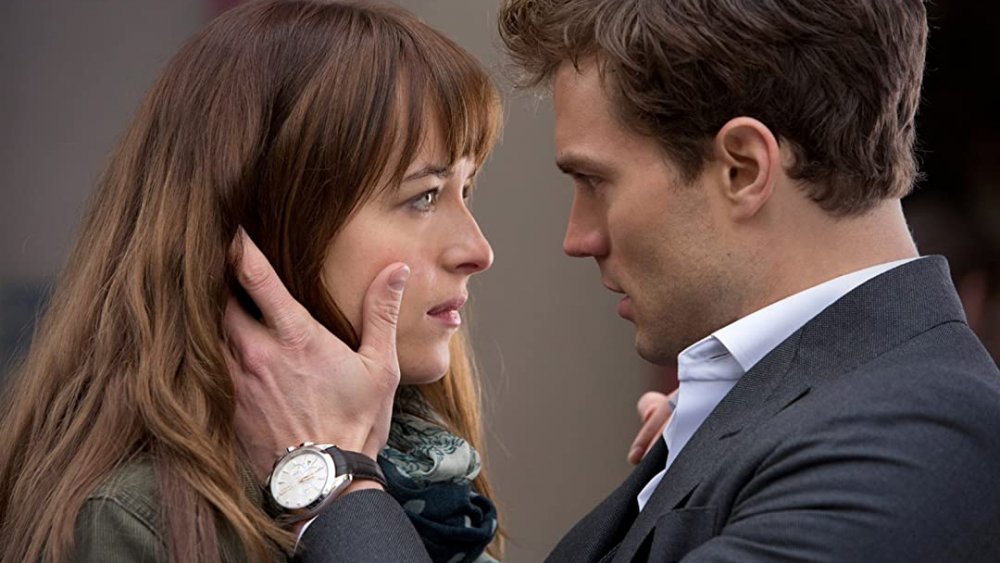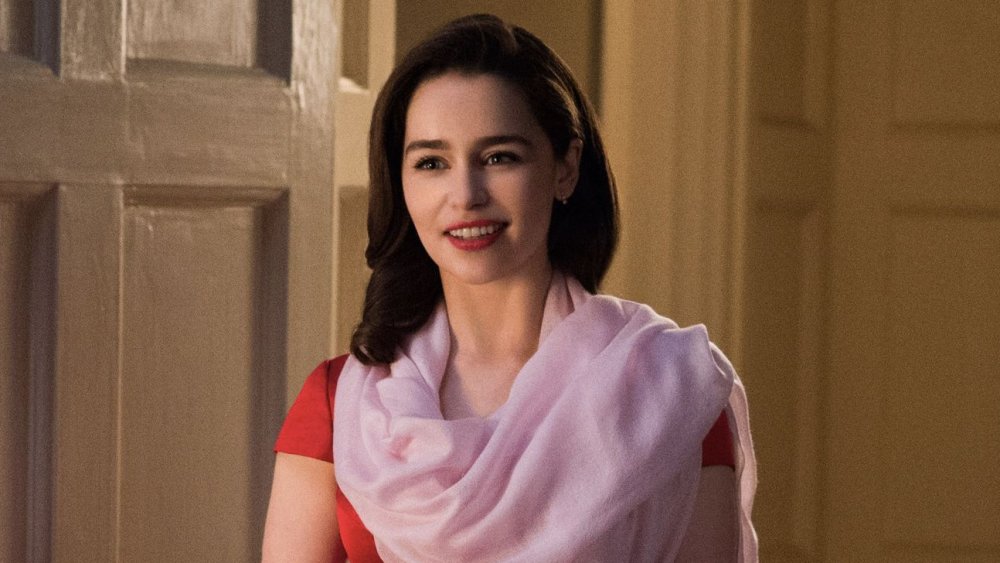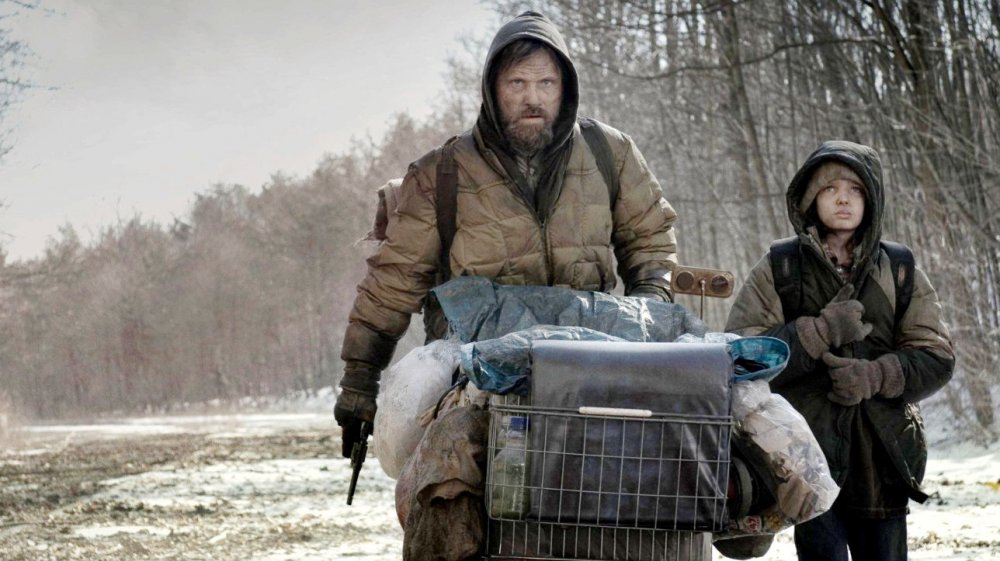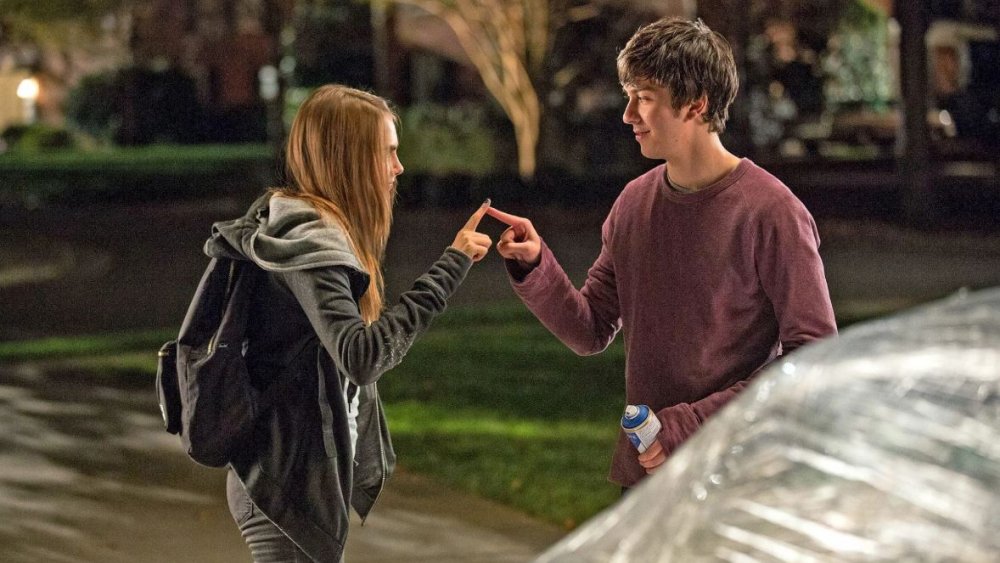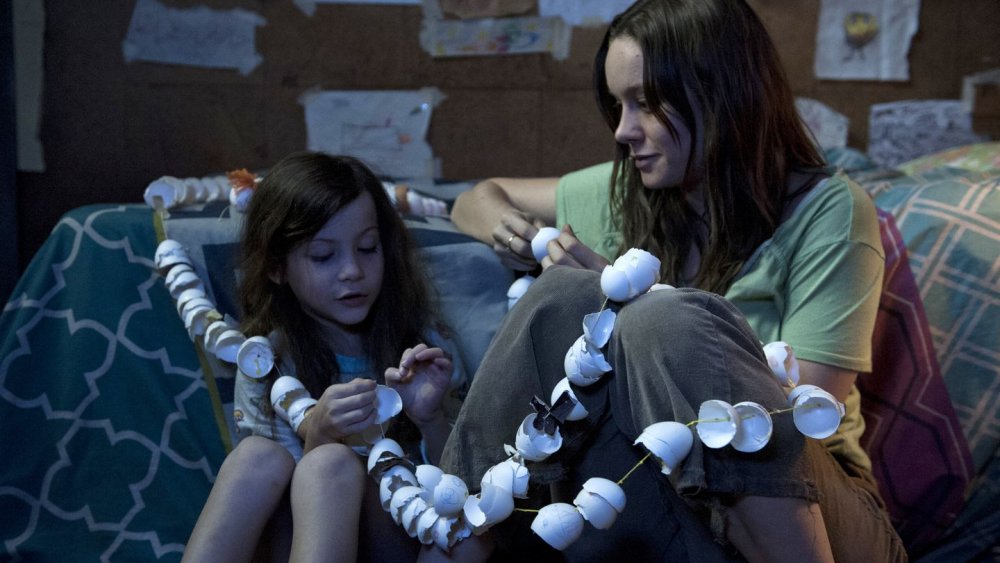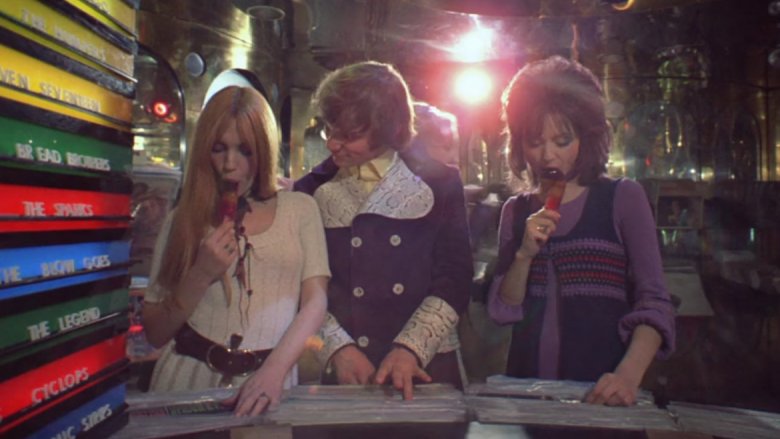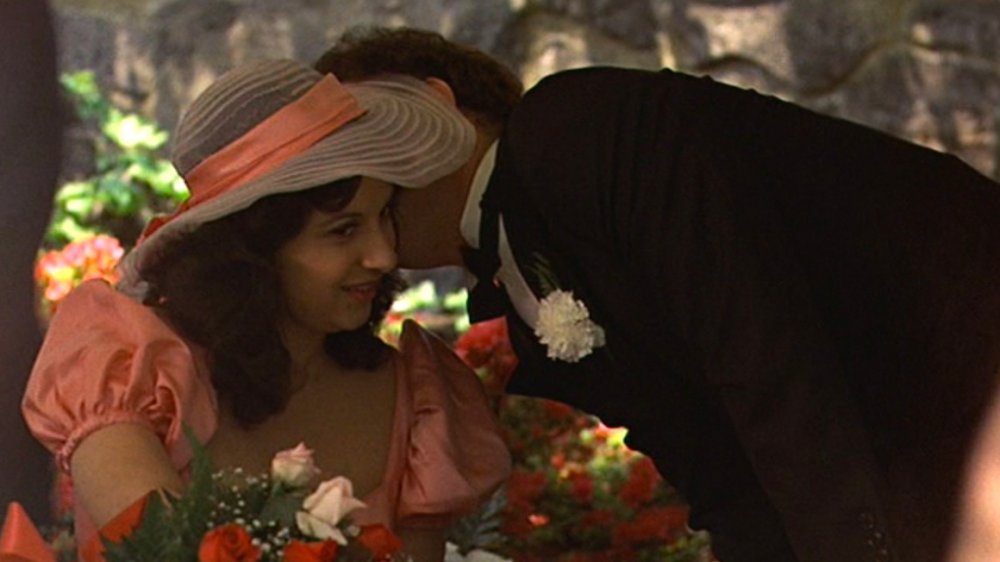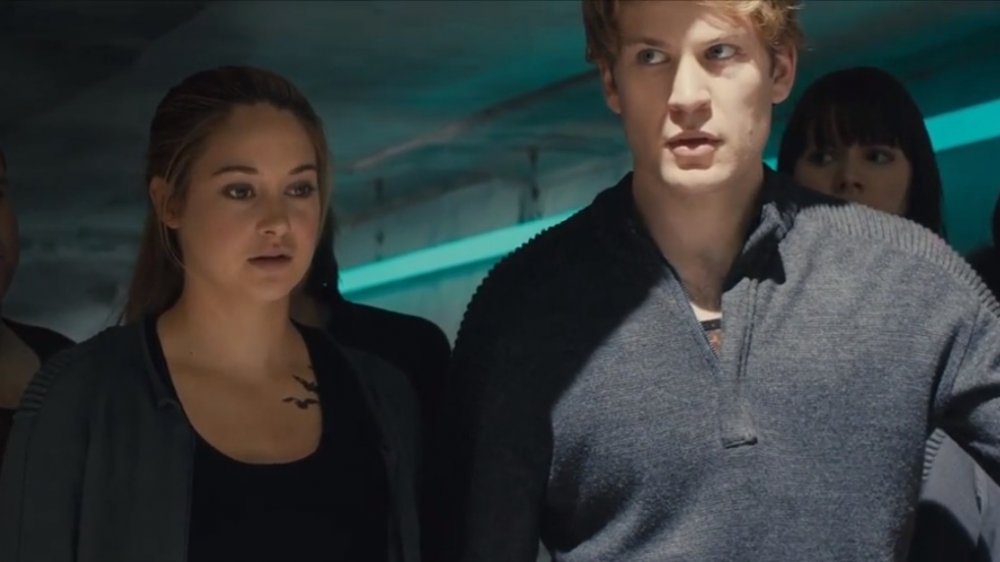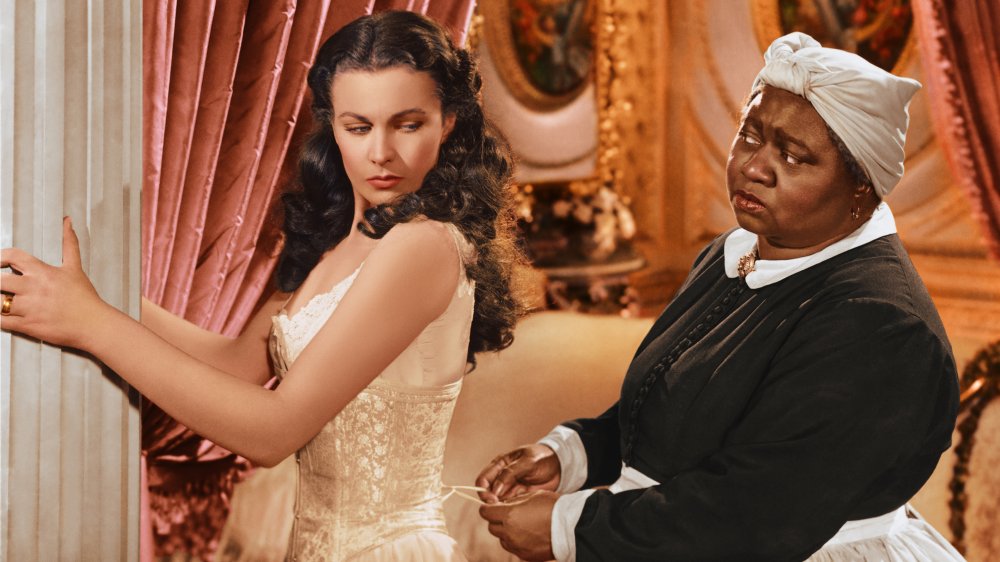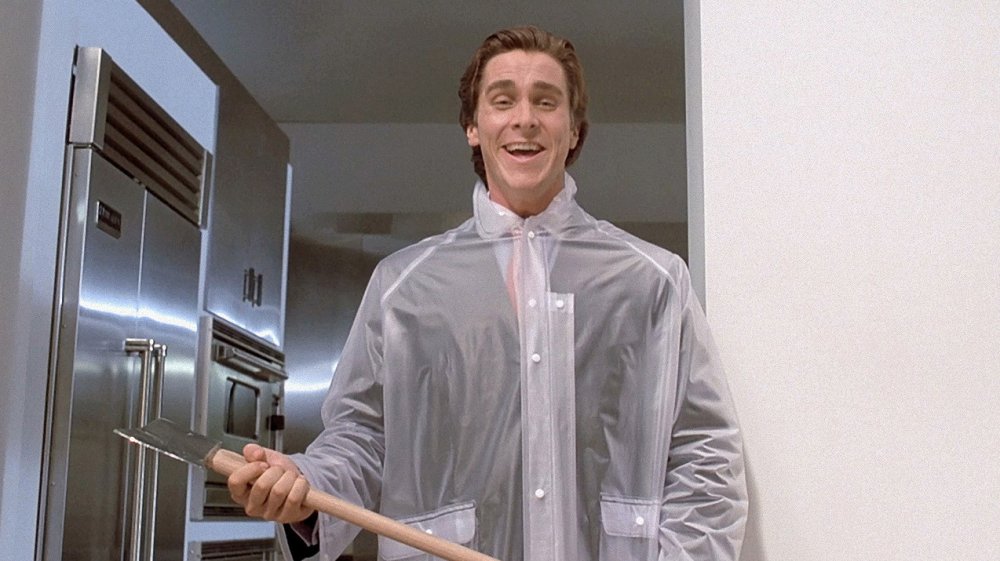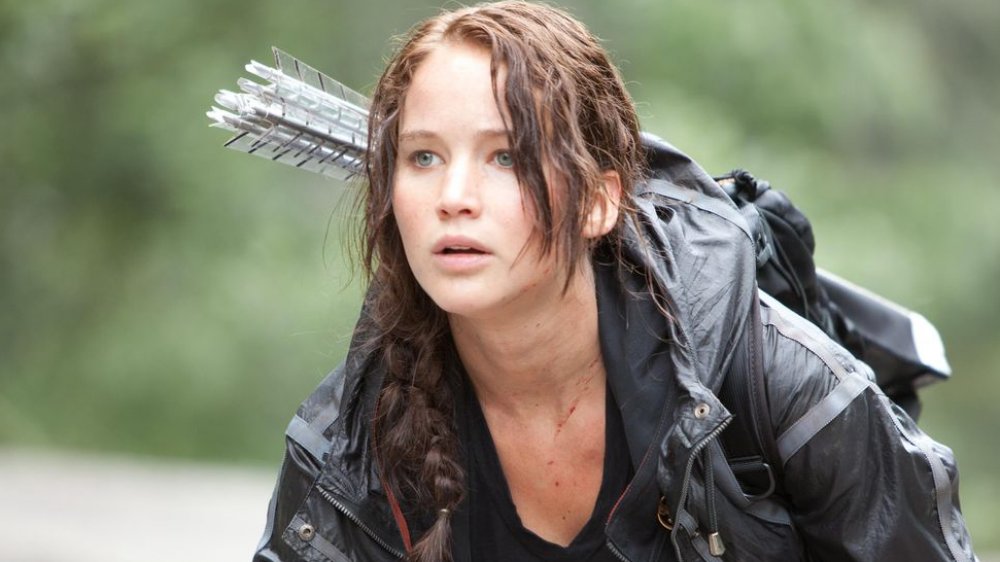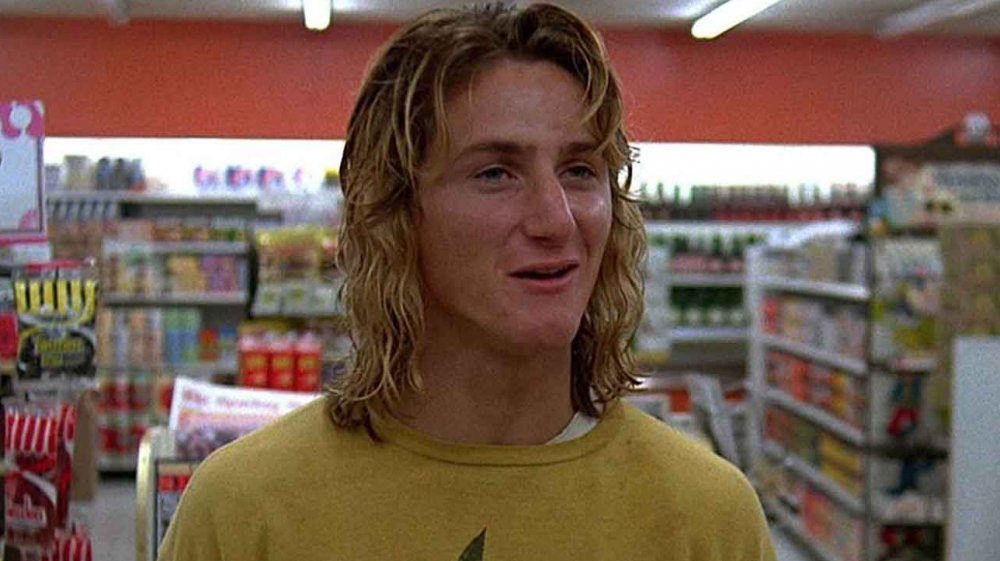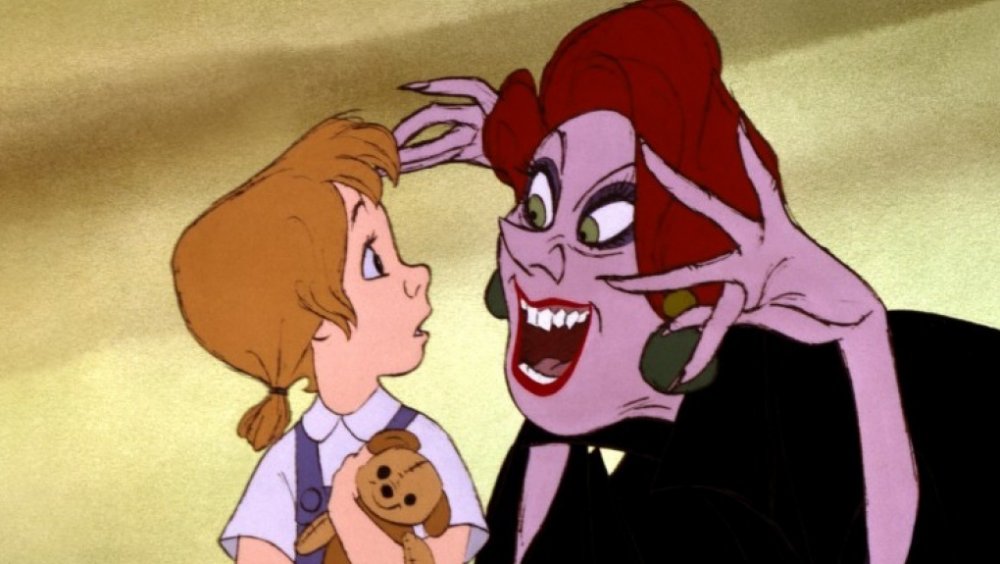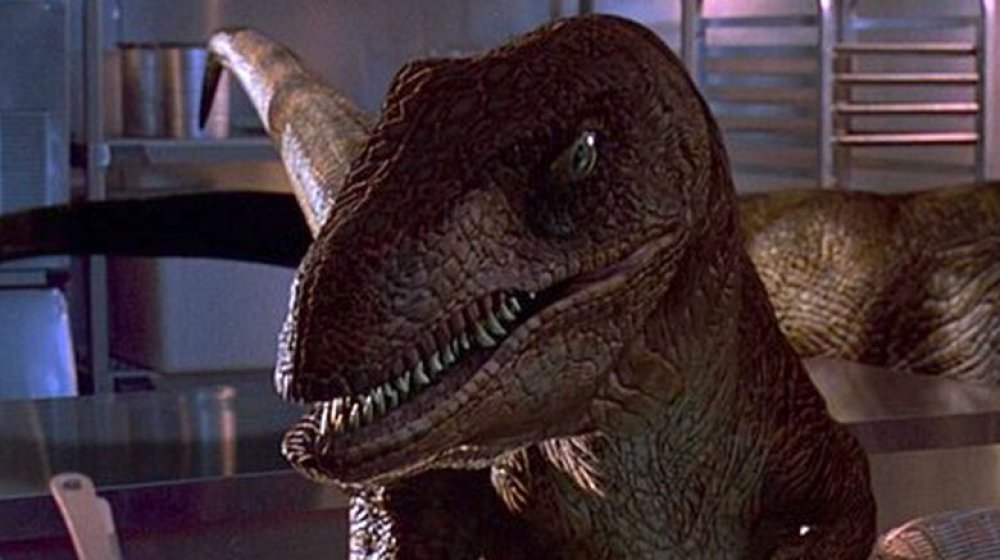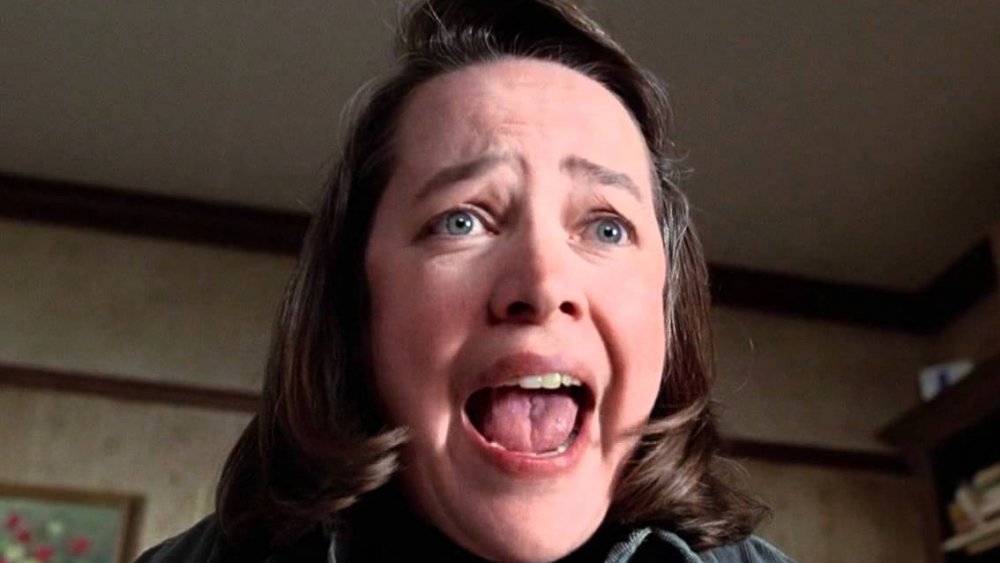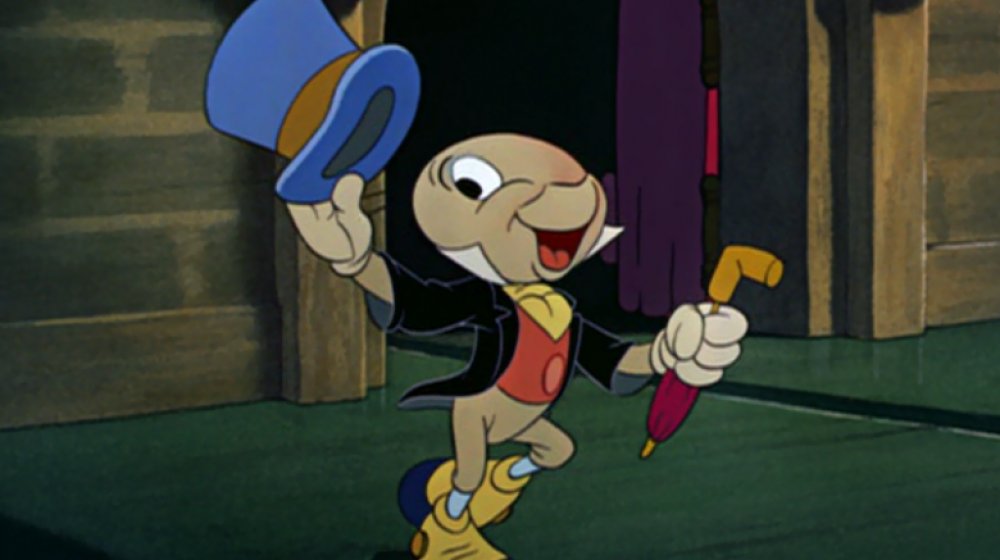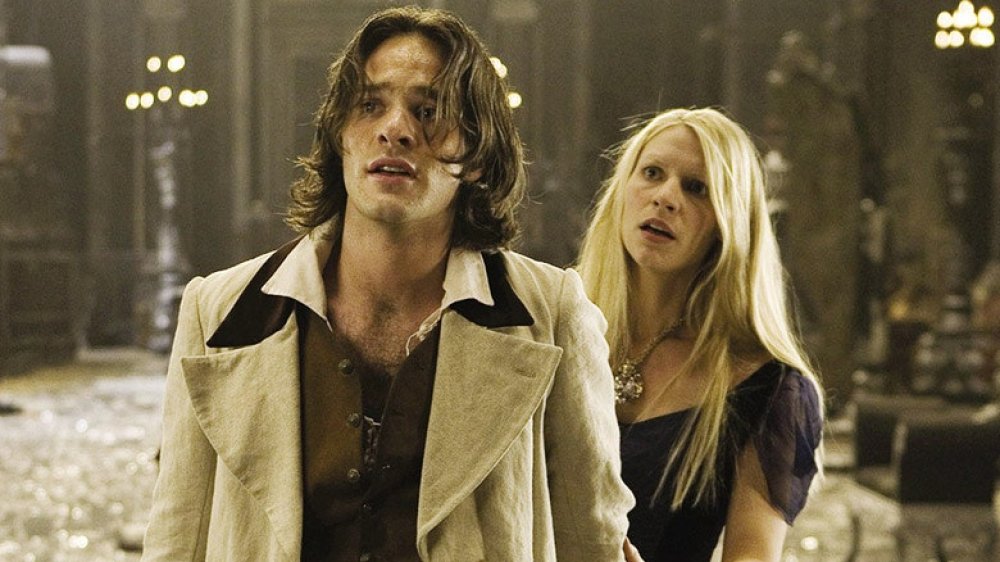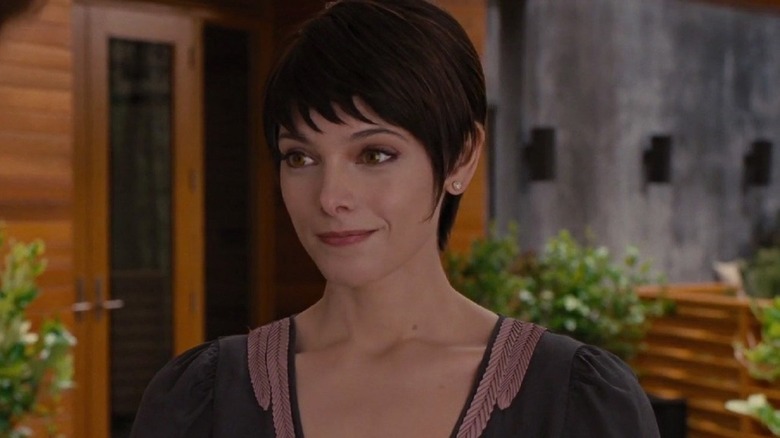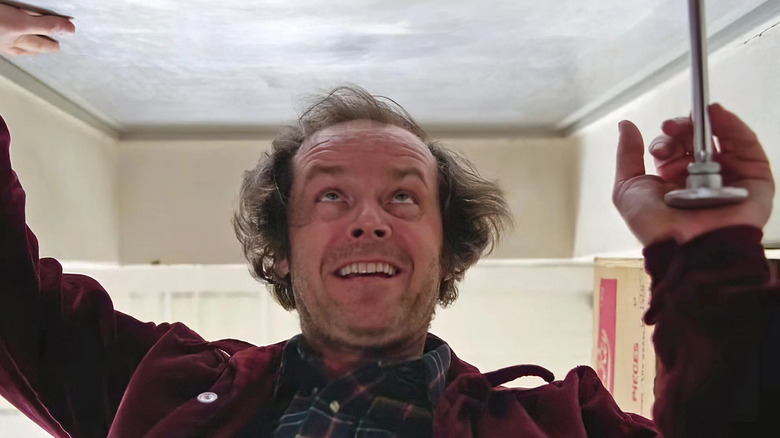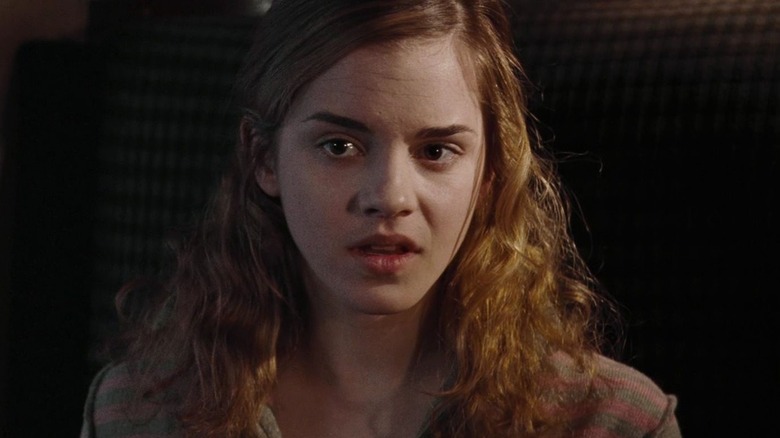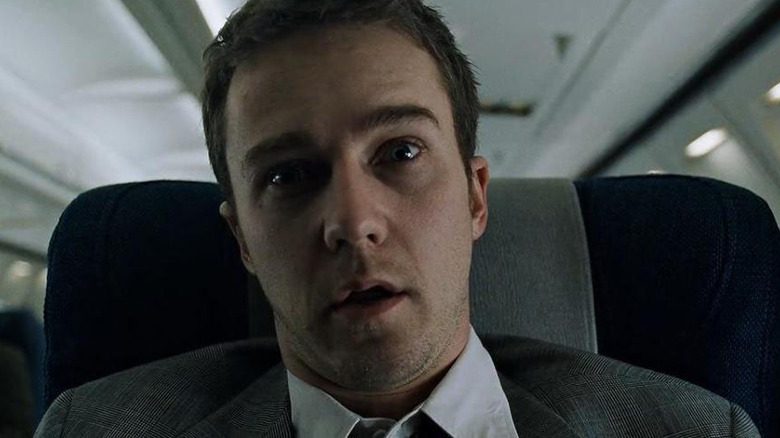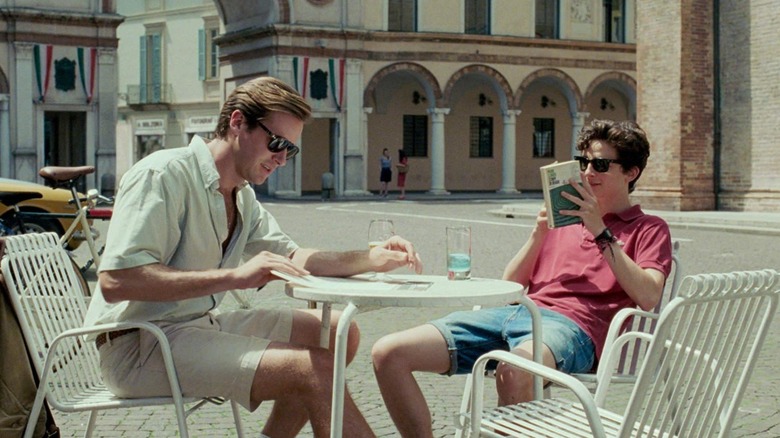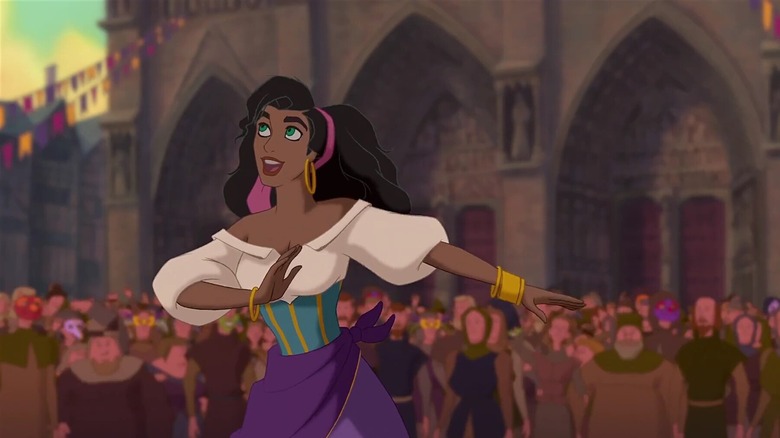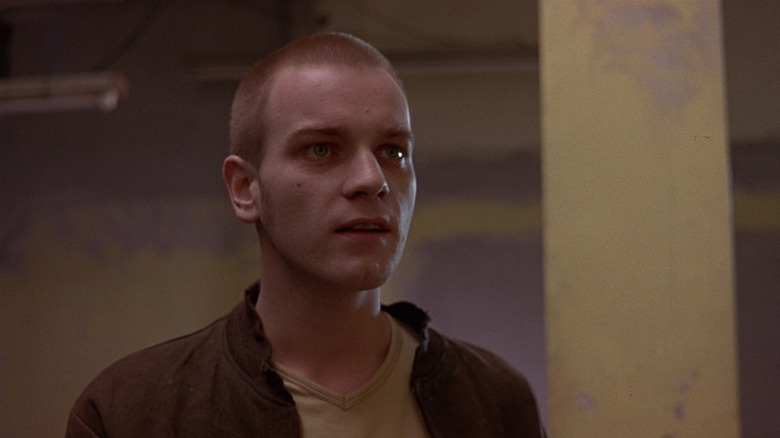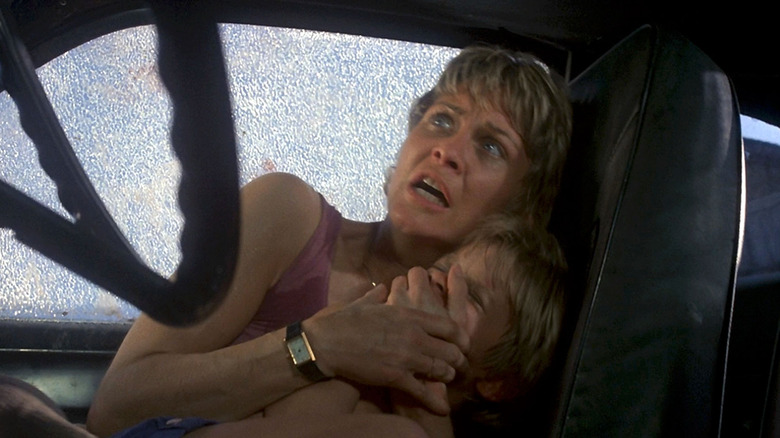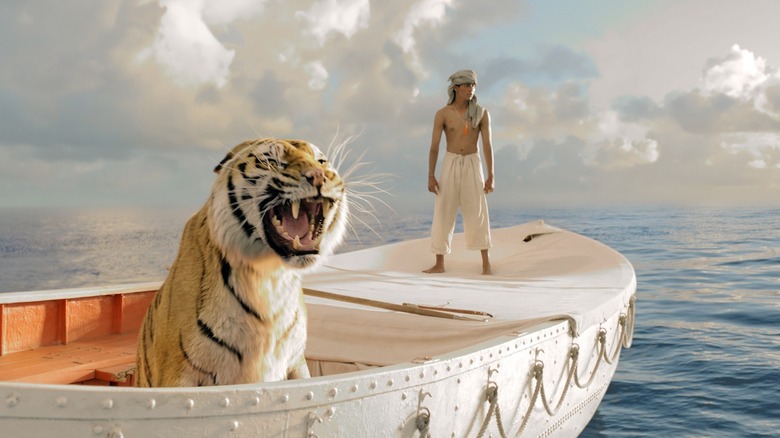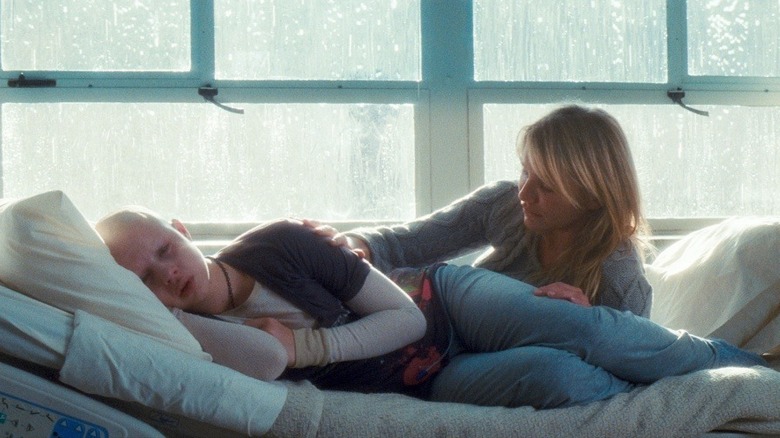Controversial Scenes In The Book That Had To Be Cut For The Movie
The book is always better than the movie — but the movies can be pretty awesome too. In many cases, the motion picture adaptation of a great book serves to supplement the literature by enriching it, providing fans with a fresh take, or simply giving us another means to enjoy a good story. When bringing the written word to the movie theater, however, it's sometimes in the film's best interest to steer clear of its source material's more controversial elements.
What stuff has been left out of your favorite bestseller-inspired films? Let's take a look, but be forewarned. Some of the controversial scenes discussed in this feature are of a sensitive nature.
It: Chapter One
Easily the most controversial scene in Stephen King's 1986 horror novel "It" takes place when, after the Losers' Club defeats the titular evil entity, our pre-teen protagonists get lost in the Derry sewer system. The group's lone female, Beverly, comes up with a strange plan to help unite the group. In order to survive, she must have intercourse with each of the six boys. Oddly enough, this works, as one of the boys remembers how to escape the sewer system after his sexual experience.
Unsurprisingly, there's no childhood sewer sex party in any onscreen version of "It." "I think it's the one scene that everybody kind of brings up and it's such a shame," "It: Chapter One" screenwriter Gary Dauberman told Entertainment Weekly. "While it's an important scene, it doesn't define the book in any way ... and it shouldn't. We know what the intent was of that scene and why he put it in there, and we tried to accomplish what the intent was in a different way."
But wait ... what was King's intent? Naturally, people had questions. "I wasn't really thinking of the sexual aspect of it," King explained. "The book dealt with childhood and adulthood ... The sexual act connected childhood and adulthood ... Times have changed since I wrote that scene and there is now more sensitivity to those issues." Perhaps, but it was still weird in the '80s.
Fifty Shades of Grey
Everybody and their mother — especially their mother, actually — know about E.L. James' erotic romance novel "Fifty Shades of Grey." Rife with graphic sex scenes and more BDSM than you can shake a safe word at, news of the raunchy novel traveled far, wide, and fast. Naturally, as one of the more memorable bestsellers of the decade, James' book was destined for a major motion picture adaptation. The movie hit theaters and was, surprising nobody, a huge box office success despite predominantly unfavorable reviews.
As fans of the book noticed, however, one particular sequence from the novel didn't make the cut — the infamous "tampon scene," in which Christian wants to get it on despite the knowledge that it's Anastasia's time of the month. Some boundaries aren't meant to be crossed ... but we're talking about "Fifty Shades of Grey" here.
"It didn't make it into the movie," director Sam Taylor-Johnson told Variety. "It was never even discussed." The film's producer, Michael De Luca, agreed. "The book needed to put you in Ana's shoes to be a successful experience ... A lot of it was very literal. The movie didn't need to do that. It's a completely different medium."
Me Before You
The romance film "Me Before You" — known by many for starring "Game of Thrones" mother of dragons Emilia Clarke — had the benefit of being adapted for the big screen by the novel's author herself, Jojo Moyes ... which only makes it more interesting that the film lacks one rather critical plot point.
In the movie, the female protagonist Louisa "Lou" Clark is quirky and intelligent, which is why nobody really understands what keeps her from spreading her wings. In the book, however, we know exactly what Lou's deal is. While drinking with a group of guys in high school, she was sexually assaulted — something she keeps firmly under wraps. This critical plot point is used to explain pretty much everything about Lou, from her weird and overtly non-sexual sense of style to her offbeat personality.
Moyes claimed they tried for six months to put that scene into the movie, but it simply didn't fit. "I worked with the director a long time writing this scene and trying different variations of it," she explained. "It achieves a different weight when you do that in pictorial form ... The more we tried, the more we realized it just skewed the tone of the whole thing ... it was changing the mood of the story."
If you or anyone you know has been a victim of sexual assault, help is available. Visit the Rape, Abuse & Incest National Network website or contact RAINN's National Helpline at 1-800-656-HOPE (4673).
The Road
Cormac McCarthy's 2006 Pulitzer-winning novel "The Road," like its 2009 film adaptation, tells the story of a father and son's fight for survival in a post-apocalyptic wasteland where nearly all organic life has died. The film undoubtedly has its fair share of heavy moments, but one particularly disturbing scene was left by the roadside.
In the book, the pair encounters a baby being roasted for food — a scene that was filmed but discarded. "I ended up fighting, saying 'We have to get rid of this scene,'" director John Hillcoat recalled. Despite filming the sequence in a restrained manner, it was ultimately just not for the best. "It all works in the book because it's in your head," he told io9, "when you visualize some of this stuff it just becomes too much. And it was overkill."
McCarthy actually didn't mind Hillcoat's cinematic rendition skipping out on that part. "Luckily, Cormac himself, he really understands how film works as a medium, how different it is," Hillcoat said. "He didn't miss anything from the book other than four lines of dialogue ... Nothing else. He didn't miss any of it, he didn't even bring up the baby. He said, 'Oh, that's irrelevant.'"
Paper Towns
Adapted from John Green's young adult novel of the same name, 2015's mystery dramedy "Paper Towns" tells a hijinks-laden coming-of-age story about an all-night road trip of revenge. However, one scene from the book was intentionally left out of the film due to a change in the public's perception of where it takes place.
Nat Wolff and Cara Delevingne's characters were supposed to break into SeaWorld as it's the only theme park in the state the latter character hadn't broken into yet. However, given the drastic downturn in SeaWorld's PR following the release of Gabriela Cowperthwaite's documentary "Blackfish" — which shone a light on what happens to killer whales in captivity — screenwriters Scott Neustadter and Michael H. Weber decided it'd be best to have the characters end their night at Orlando's SunTrust building instead.
"Blackfish" did more than just cause the screenwriters of "Paper Towns" to omit one of the book's scenes. The documentary's impact was substantial. SeaWorld suffered massive financial losses and has largely remained in damage control mode since the film's release. "Since [Green] wrote the book, the documentary came out," "Paper Towns" producer Wyck Godfrey told The Hollywood Reporter. "I think it's a little less playful to go to SeaWorld now."
Room
Emma Donoghue didn't just write the impactful 2010 novel "Room." She also wrote the screenplay for the award-winning novel's film adaptation, which itself was nominated for multiple Academy Awards, including Best Picture. As is often the case, however, Donoghue struggled with the harsh reality that not every scene from the book is good for the movie.
In the case of "Room," Donoghue chose to cut out the scene in which Ma tells her son Jack that she gave birth to a baby girl before him. Because she had no medical attention in captivity, the child was tragically stillborn. "In the novel, I offset the drama by having it come up in a low-key way," Donoghue told Variety, "when Jack asks Ma about something he overheard her say to her lawyer. But for the screenplay, I moved the revelation to a more dramatic, visually evocative point."
Despite having written the scene into the script, Donoghue made the tough move to remove it completely. "The problem was that when the confession happened at that moment — or anywhere else in the script I tried putting it — the scene became an utter downer," she explained. "Worse: Whereas a book can meander toward its destination, a film has a forward momentum. The stillbirth story slammed the brakes and yanked us back toward the tragic past. So the scene I sweated over longest ended up cut, and I have to grudgingly admit that the film's better without it."
A Clockwork Orange
When thinking of Stanley Kubrick's 1971 film adaptation of Anthony Burgess's dystopian crime novel "A Clockwork Orange," many people recall the infamously ultraviolent scene in which Alex and his gang of droogs invade a home, forcing the owner to watch while they rape his wife. With said scene in place, it's hard to believe something controversial from the book would be cut.
The scene in question comes after Alex meets a couple of lollipop-licking girls at the record shop, taking them home and having what appears to be a consensual threesome in fast-motion, set to an over-clocked version of the "William Tell Overture." In the book, however, the encounter is a lot less friendly, and the school-skipping girls are apparently only "ten-years-young."
Sexual violence against a grown woman was already pushing the boundaries, but sexual violence against two girls? That's too much, even for a Kubrick film.
If you or anyone you know has been a victim of sexual assault, help is available. Visit the Rape, Abuse & Incest National Network website or contact RAINN's National Helpline at 1-800-656-HOPE (4673).
The Godfather
Based primarily on Mario Puzo's 1969 bestselling crime novel of the same name, Francis Ford Coppola's "The Godfather" is a masterpiece of crime cinema, taking home a then-record five Golden Globes in 1973. Hardware aside, the film lacks one of the novel's more ridiculous subplots regarding a particularly important female supporting character.
Lucy Mancini, portrayed by Jeannie Linero in the films, saw her role in the story significantly diminished when "The Godfather" made the transition to film. Readers of Puzo's novel will probably remember Lucy as the character who's absolutely devastated by the death of Sonny — specifically because he was the only man well-endowed enough to satisfy her sexually, as she is cursed with an uncommonly large vagina. For those who haven't read the book: we're not kidding around here. Lucy's anatomy is the character's defining characteristic, and there's an entire subplot devoted to it.
Luckily for Lucy, her inability to be sexually satisfied is remedied by the surgeon Jules Segal, who recommends vaginal surgery and even promises Lucy to "try it out personally" after the surgery. The two characters end up getting married and presumably living happily ever after. It isn't hard to understand why Coppola elected to leave this bit of literary genius out of the film.
Divergent
In order to maintain a more financially friendly PG-13 rating, the film adaptation of Veronica Roth's post-apocalyptic YA novel "Divergent" had to be toned down in a major way. The film primarily targeted the novel's fanbase, which contained a large portion of teens — meaning that, as director Neil Burger put it, an "R rating was off the table."
However, appeasing the MPAA apparently wasn't the reason why one of the novel's more brutal scenes — in which the Dauntless initiate played by Ben Lamb wakes up with a knife in his eyeball — was removed from the theatrical version of the film. "We shot it — but we took it out," Burger told Vulture. "It's one of those things in movie-making, to make the whole better, you sometimes have to kill some of these. It's called killing your babies."
The director also stuck to his story in an interview with CinemaBlend, explaining, "That's really the art of trying to figure out where the movie is working and sometimes what's slowing it down is one of your favorite scenes, and you've got to cut it out." As much as we'd like to take Burger's word for it, considering the scene in question was shot and included in the home release of the film, it's easy to assume it might've been cut to keep a PG-13 rating.
Gone with the Wind
You can't talk about the history of American cinema without talking about David O. Selznick's and Victor Fleming's film adaptation of Margaret Mitchell's 1936 novel "Gone with the Wind." The classic film received a staggering number of awards and nominations and is permanently enshrined in the annals of Hollywood history.
Adapting the racially charged novel for the big screen, however, was no easy feat. "It is certainly quite a nut to crack," screenwriter Sidney Howard admitted — and that's putting it mildly. Criticism of Mitchell's book by The Atlantic points out that the central black characters are okay with slavery and almost entirely disinterested in freedom. Mitchell once describes a character as having "the uncomprehending sadness of a monkey's face," and the book refers to "bad" African-Americans using slurs. Worse yet, the book positions the Ku Klux Klan as a "tragic necessity."
Obviously, Selznick had a hard time remaining faithful to the original story; as he put it, "I, for one, have no desire to produce any anti-Negro film." Nevertheless, despite his best efforts, "Gone with the Wind" has long been criticized — and understandably so — for perpetuating black stereotypes and Civil War myths.
American Psycho
Mary Harron's film adaptation of Bret Easton Ellis's 1991 bestseller "American Psycho" doesn't lack violence, brutality, or disturbing scenes. We watch the film's protagonist, Patrick Bateman, callously murder a homeless man, stomp a dog to death, shoot an elderly woman, drop a chainsaw on a fleeing prostitute, and fill up a colleague's apartment with closets of dead bodies — but still, the film doesn't even touch some of the scenes from the book, which is so disturbing that The New York Times said it was understandable when Simon & Schuster refused to publish it on the grounds of taste.
Perhaps one of the most disturbing scenes that didn't make the transition to the big screen involves protagonist Patrick Bateman's graphic sexual torture of a young woman, culminating when he cuts her in half with a chainsaw. For real — it's some pretty messed up stuff, and Harron and screenwriter Guinevere Turner were wise not to include these brutally disturbing scenes, as their visual depictions surely would've detracted from the film.
The Hunger Games
The entire conceit of "The Hunger Games" is built on death, pain, torture, and cruelty. In a fascist nation called Panem, an annual contest (the titular Hunger Games) selects two children from each of 12 districts to fight to the death, both to amuse the elitists in charge and to punish the population for a failed uprising from many years earlier. Not only does President Snow's government in the Capital enable the deaths of 23 children each year in elaborate war games, but it develops and utilizes technology to lead to more suffering, both in and out of the Hunger Games. While Suzanne Collins' very successful Hunger Games books were aimed at teens and children, the movie adaptations eliminated some of the Capital's particularly ghastly acts. For example, anyone who tries to escape Panem and gets caught, as well as those mixed up in potential uprisings, are turned into Avoxes: Their tongues are cut out, meaning they can't talk, and they're forced into a life of slavery in the Capital.
Capital-employed Hunger Games-makers utilize muttations, genetically modified creatures, to make the competition even deadlier. The final three competitors in the first Hunger Games novel face off with wolf-type monsters. And thanks to science, each of these so-called "mutts" unsettlingly bears the face of one of the children killed earlier in the Games.
Fast Times at Ridgemont High
Many of filmmaker Cameron Crowe's works are based on true stories. "Almost Famous" is about a green teen music journalist who embeds himself in a rock band's tour. In the early '70s, a precocious Crowe really did tour with acts. In 1981, Crowe published "Fast Times at Ridgemont High: A True Story," and to observe teenagers in their element, a 22-year-old writer pretended to be a senior in a real California high school. That book became the basis of the 1982 classic teen movie "Fast Times at Ridgemont High," one of the most salacious and eye-opening accounts of teen life ever put to film. The breakout star: future ultra-serious, two-time Academy Award-winning actor Sean Penn, who starred as Jeff Spicoli, a well-liked, good-natured surfer-stoner dimwit.
But in the book, Spicoli is a target of his classmates' derision, both for his lack of intelligence and outright cruelty. Per Crowe's account, a student's father and sister are killed in a grisly car accident, and Spicoli bursts into the kid's class, clutching a newspaper article with crash photos. "'Look at these b******' photos!' boomed Jeff Spicoli. 'You can see the people inside and everything.' Everyone froze. No one spoke." The kid cried and nobody spoke to Spicoli for a month. This is not a scene featured in the mostly comedic "Fast Times" film.
The Rescuers
The 1977 Disney movie "The Rescuers" follows mice Bernard and Miss Bianca, who, in their duties as members of the Rescue Aid Society, attempt to rescue an orphan named Penny, kidnapped by the wicked, Cruella De Vil-esque Madame Medusa. The petty reason: She's in pursuit of a rare and valuable diamond, and wants Penny to crawl into the dangerous, narrow cave to get it. Up until that big moment arrives, Medusa is verbally abusive to Penny and leaves a couple of crocodiles to keep her from escaping.
"The Rescuers" was loosely based on Margery Sharp's 1962 book "Miss Bianca," the sequel to "The Rescuers." In print, the villain is the wicked Duchess and she has no need for a new diamond because her house is built out of them. She does procure an orphan (named Patience here), but she's even crueler — the Duchess starves Patience and beats her with a cane. Also not included in the cartoon adaption of "The Rescuers" is how the main orphan was not the only orphan the villain tormented, merely the last one. Others died young, having been hunted to the death for sport by the Duchess's bloodhounds Tyrant and Torment.
Jurassic Park
Michael Crichton's 1990 novel "Jurassic Park" is a techno-thriller, detailing the death and destruction that occurs when the science-created dinosaur clones that inhabit a remote theme park go a little bit mad and start killing as many humans as they can. One of the scariest and most memorable scenes in the blockbuster 1993 film adaptation: Small but deadly velociraptors track down kids Lex and Tim, hiding out in a kitchen and trying not to move or make a sound lest they add to the dino-driven body count. They get out safely, but a far worse and sickening fate befalls a much younger child in Crichton's novel.
The first sequences of the book didn't make it into the movie, in which Costa Rica is plagued by a series of mysterious lizard attacks. Those lizards are obviously Jurassic Park escapees, and in one not-adapted scene, a nurse goes into a nursery and discovers three little dinosaurs attacking a baby. "Elena saw the blood dripping from their snouts," Crichton wrote. "Softly chirping, one lizard bent down and, with a quick shake of its head, tore a ragged chunk of flesh from the baby."
Misery
It's rare for a horror movie to win an Academy Award, but Kathy Bates did it with her performance as Annie Wilkes in "Misery." The 1990 film is an adaptation of a Stephen King novel, and it's the rare project for the author that doesn't involve monsters, ghosts, or creatures. The scary thing in "Misery" is a human, and it's Annie, a fan of romance novelist Paul Sheldon (James Caan) to such a dark and troubling extent that she holds the author, moderately injured in a car accident, hostage in her home, and forces him to write. She leaves one day, and Paul goes snooping in the house to figure out Annie's deal. Upon her return, she realizes what he did, and restrains him against a bed. Then, to ensure he doesn't try another escape, she issues a "hobbling" — violently and graphically shattering his ankles with a sledgehammer. Perhaps director Rob Reiner and screenwriter William Goldman are just more squeamish than King. In the original book, Annie doesn't club Paul's ankles — she amputates a foot with an axe, and then cauterizes the bloody stump wound with a blowtorch.
Pinocchio
Jiminy Cricket, from the 1940 film "Pinocchio," is one of the most memorable characters in the vast universe of Disney animated films, and for good reason. He's kind, patient, serves as the conscience of marionette-turned-real-boy Pinocchio, and he was the first to sing the classic movie song "When You Wish Upon a Star." Writers and animators greatly embellished and fleshed out the character for the film, based on Carlo Collodi's episodic fairy tale novel "The Adventures of Pinocchio," published in serial form in 1881 and 1882.
In the source text, Jiminy Cricket is known only as "Talking Cricket" and he isn't a major character. Early in the story, when Pinocchio has left home, the Talking Cricket advises the boy to head back to the safety and comfort of home. Pinocchio flies into a rage over being told what to do, and he picks up a hammer and throws it "with all his strength at the Talking Cricket," Collodi wrote. The boy nails the insect on its head, and "with a last weak "cri-cri-cri" the poor Cricket fell from the wall, dead!" Pinocchio harbors no remorse over this incident, which would have made for a very dark Disney film, telling Geppetto, "It was his own fault, for I didn't want to kill him."
Stardust
"Stardust" is a film of grand fantasy, and it feels like it has its origins in some centuries-old fairytale, although it's actually based on Neil Gaiman's 1997 novel of the same name. The plot: A young man named Tristan (Charlie Cox) sees a falling star and aims to get it and give it to his lady love, with the aid of a magical talisman from his mother. Instead, he finds the star transformed into a woman named Yvaine (Claire Danes), with whom he falls in love, of course, while also avoiding three ancient witches who want to eat Yvaine's heart to restore their youth and beauty. In the book, the eldest of the three is named The Witch-Queen, but in the movie is renamed Lamia (Michelle Pfeiffer). Also in the book: a bit more darkness and violence. A unicorn dies in both versions of "Stardust." In the film, the death comes quick via a blast of green, magical flames from Lamia. In the book, it's a little more involved. After the creature impales the Witch-Queen on its horn, the witch stabs her dagger into the unicorn's eye and into the brain, which ends its life. After that, the witch severs the unicorn's head from its body, spits into the dead thing's mouth, then uses the blood in the spell and turns the body into a zombie.
The Twilight Saga
"The Twilight Saga" adapted the four volumes of the book series into five movies — splitting "Breaking Dawn" into two parts — and on the whole, it does a pretty good job of sharing most of the Cullen family backstories.
Rosalie was brutalized by her fiancé, Emmett was nearly killed by a bear, and Jasper was a Confederate soldier during the civil war. Patriarch Carlisle saved Edward and Esme from near death and he himself was turned by a coven of vampires in the 1600s. The only person in the Cullen family whose backstory we don't learn in the movies is Alice.
Alice was born a human with precognitive abilities and dealt with most of the people in her hometown shunning her because they thought she was cursed. After the death of her mother, Alice discovered that her father and his new wife's father conspired to kill her mother. In order to keep her quiet, Alice's father had her committed to an asylum where she underwent brutal experiments and lost her memory after electroshock therapy.
While it would've been welcome to learn more about Alice in the movie, her traumatic experience would have been very difficult to portray onscreen without risking the film series' appeal to pre-teen girls who were more interested in the central romance of the movie.
The Shining
"The Shining" is one of the most lauded horror movies of all time and certainly one of Stephen King's most famous novels. Part of what makes the movie so good is its ability to create anxiety, tension, and fear without countless, overt displays of gore.
In the novel, Jack Torrance begins the story as a family man with writer's block who is trying to provide a good life for his wife and son, Danny. He slowly descends into madness as the Overlook Hotel — of which he is the winter caretaker — comes to possess his mind and body. Toward the end of the book, Jack is chasing Danny with a roque mallet when he is able to briefly take control of his body back from the malevolence of the hotel. Jack entreats Danny to run away and bashes his own face in with the mallet in order to prevent himself from pursuing his son.
In the movie, Jack enters the film a suspicious figure and becomes even more deranged as the story moves forward. The film version of Jack never recovers himself for even a second as he chases his wife and child into the grounds of the Overlook. Audiences were spared the gore of the roque mallet scene because Jack was never really a loving father in the film version of the story. Instead, we watch as he nearly axes his wife and son to death before they're able to escape. Jack then freezes to death in the hotel maze, face intact.
The Harry Potter series
Despite the fact that J.K. Rowling's seven-book series, "Harry Potter," was adapted into eight movies, a lot of content still needed to be cut from the films to save time. There are dozens of chapters and subplots that were altered or entirely removed from the film adaptations, and it's not surprising that one of them was S.P.E.W.
In the novel "Harry Potter and the Goblet of Fire," Hermione comes to learn more about the plight of house-elves in the wizarding world, much to her horror. House-elves are subjugated and enslaved by wizards and have been for centuries, and Hermione takes issue with this — especially having grown up in the Muggle world where slavery is generally frowned upon. Inspired by Dobby's desire to escape Lucius Malfoy's ownership, Hermione begins an organization called "the Society for the Preservation of Elvish Welfare."
Unfortunately for Hermione, Rowling writes about S.P.E.W. from its inception as a big joke. Characters refer to the organization with synonyms for spew — think barf or hurl — and the elves at Hogwarts come to greatly resent Hermione for attempting to free them. Since the fourth book's release, Hermione's organization has been a source of great debate and controversy within the Harry Potter fandom, so it's no wonder they decided to leave it out of the movies.
Fight Club
"Fight Club" — a film directed by David Fincher and based on the novel of the same name by Chuck Palahniuk — didn't do incredibly well at the box office but has since become a cult favorite among film buffs. The movie follows the Narrator as he becomes a comrade of Tyler Durden, an anti-capitalist anarchist who seeks to disrupt America's consumerist society and who starts a dangerous fight club alongside the Narrator.
The movie shows plenty of brutal fights and violence, but some of the worst stuff in the books was still omitted for the screen adaptation. In Chapter 28 of the novel, the Narrator — after having realized that Tyler Durden is his own alter-ego and a figment of his imagination — goes to a fight club and arranges to fight fifty men in a row. The Narrator is practically pulverized. He bites off a chunk of his own tongue at one point and the hole in his cheek (which he'd gotten earlier in the book) is ripped open much wider so that his teeth are visible through his face. There's still plenty of brutality in the movie, but it isn't hard to see why this moment of body horror didn't make the cut.
Call Me by Your Name
"Call Me by Your Name" — a 2017 film directed by Luca Gaudagnino — tells the story of a deeply intense and erotic relationship between a teenage boy named Elio and his father's graduate student, Oliver, who is several years older. The movie was lauded by critics as a sensual, queer coming-of-age story and a well-wrought adaptation of the novel upon which the film was based.
Oliver and Elio develop a bond with incredible depth, and there's a particularly graphic scene involving a peach in both the novel and the film that is often cited as the best indicator of the intimacy of Oliver and Elio's romance, but there's another scene in the book that is even more personal.
Toward the end of the novel, Oliver and Elio spend the night together and share a bathroom where they both relieve themselves. In his internal monologue, Elio realizes that he wants to see Oliver's bowel movement and show him his so that their bodies "have no secrets." Oliver is very on board with this idea and actually massages Elio's abdomen while he's using the toilet. This doesn't make it into the film, understandably, and it makes the peach scene look pretty tame in comparison.
The Hunchback of Notre Dame
It's hard to imagine why Disney thought Victor Hugo's "The Hunchback of Notre Dame" would be a good story to adapt into an animated musical marketed toward a family audience. The original novel centers around a Romani woman (a girl, really, as she's only sixteen) in Paris named Esmerelda and all of the men who find themselves lusting after her. Quasimodo, the titular character, falls deeply in love with Esmerelda after she defends him from humiliation and she also catches the attention of his reluctant father-figure, Claude Frollo.
In the movie, Frollo sets Esmerelda up to be killed after she rejects his advances, but Quasimodo is able to save her and stop Frollo. Even though Quasimodo doesn't end up with Esmerelda, he is accepted finally, into society and they all live happily ever after.
In the book, Frollo arranges for Esmerelda to be hanged and watches her death from the balcony of the cathedral. Quasimodo, full of rage at the death of his love, pushes Frollo off of the balcony, killing him instantly. Later on, Quasimodo visits Esmerelda's grave and sits vigil with her until he starves to death. It was not exactly a standard, Disney animated movie ending so some crucial changes were required to make it more suitable for their target audience.
Trainspotting
"Trainspotting" is a gritty film — based on a novel by the same name by Irvine Welsh — about drug addicts and the havoc and despair that comes with a dependency on something as lethal and illicit as heroin. Renton, the protagonist, suffers through withdrawals and relapses throughout the story as well as many brutal and often gross things that he needs to undergo in order to either abstain from drugs or desperately attain them. The movie doesn't shy away from the horrible and grotesque elements of drug addiction, but there is one particularly deranged scene in the book that didn't make it into the film.
In the book, Renton attends his brother's funeral and actually hooks up with his brother's girlfriend in the toilets. While this is, in and of itself, pretty problematic, it's made even more grotesque by the fact that she is heavily pregnant — to the point where she could go into labor at any moment. Renton wonders to himself whether sex with a very pregnant person can be considered a threesome and then notes that his private area is very pungent because he hasn't showered in a while. It's a whole new rock bottom for Renton in the books and luckily one that isn't needed in the film.
If you or anyone you know needs help with addiction issues, help is available. Visit the Substance Abuse and Mental Health Services Administration website or contact SAMHSA's National Helpline at 1-800-662-HELP (4357).
Cujo
Stephen King is known for his novels' macabre endings. King's characters don't always survive through the end of his stories, but many different film adaptations have sought to leave the audience with a more hopeful resolution. Such is the case with "Cujo," a Stephen King adaptation released in 1983.
The film stays mostly true to the book, thanks to the book's relatively straightforward plot and premise: A dog is infected with rabies and becomes viciously dangerous, killing multiple people. However, its ending is much less tragic. Donna spends most of the movie attempting to protect her young son, Tad, from Cujo by holing away in their broken Ford Pinto. As they hide from Cujo, Tad and Donna suffer from heatstroke and dehydration and Donna tries and fails to escape from the car with her son in order to prevent him from succumbing.
In the novel, by the time Cujo is finally killed after Donna's husband Vic arrives to rescue her and his son, Tad has already died from heatstroke and Donna sits on the ground wailing over his lifeless body as the story ends. Luckily in the film, Tad is saved from the car before he is too far gone.
Life of Pi
"Life of Pi" was a novel by Yann Martel that was adapted for film by director Ang Lee in 2012. Due to the unique narrative structure of the novel — told in retrospect by an older Pi, wherein he takes time to explain certain things or ruminate on different ideas — the screenplay needed to make changes in order to make the story adaptable for a visual medium.
One of the least surprising changes from the book to the movie takes place when Pi finds himself on the lifeboat with the hyena, zebra, and orangutan named Orange Juice. In the book, Pi and the three animals coexist on the boat for a while as the hyena circles the wounded zebra. Finally, against the wishes of the orangutan, the hyena rips into the zebra and eats him in a very graphically described scene. Because of the orangutan's protests, she is violently beheaded by the hyena.
In the movie, most of the gore of the scene is left off-camera, thankfully, and Orange Juice only displays minimal visual wounds upon her death, sparing the audience the violent image of a beheaded corpse.
My Sister's Keeper
Jodi Picoult's award-winning novel, "My Sister's Keeper," was adapted for film in 2009 and starred Cameron Diaz and Abigail Breslin. The movie follows the Fitzgerald family which consists of the parents Sara and Brian and their three children, Kate, Jesse, and Anna. After their daughter, Kate, is diagnosed with leukemia, Sara and Brian decided to have a third child (Anna) in order to provide Kate with whatever blood and marrow donations she needs in order to go through her treatment.
The story follows Anna as she asks for medical emancipation from her parents, as she wants to be able to choose for herself whether or not she give parts of herself to her sister. Sara is particularly upset with Anna until it is revealed that Kate is the one who has asked Anna to do this, as she wants to end her fight against cancer and spare her family any further pain.
In the movie, the ending is pretty predictable. Anna doesn't donate her kidney to Kate and Kate eventually passes away. But in the book, it is actually Anna who dies. The point of the novel was to ruminate on the unpredictable and often meaningless nature of death by having Anna pass away in a car accident after becoming successfully emancipated. Kate receives her sister's kidney and lives on, and it is this ending, among other things, that makes the novel so much more masterful than its film adaptation.
